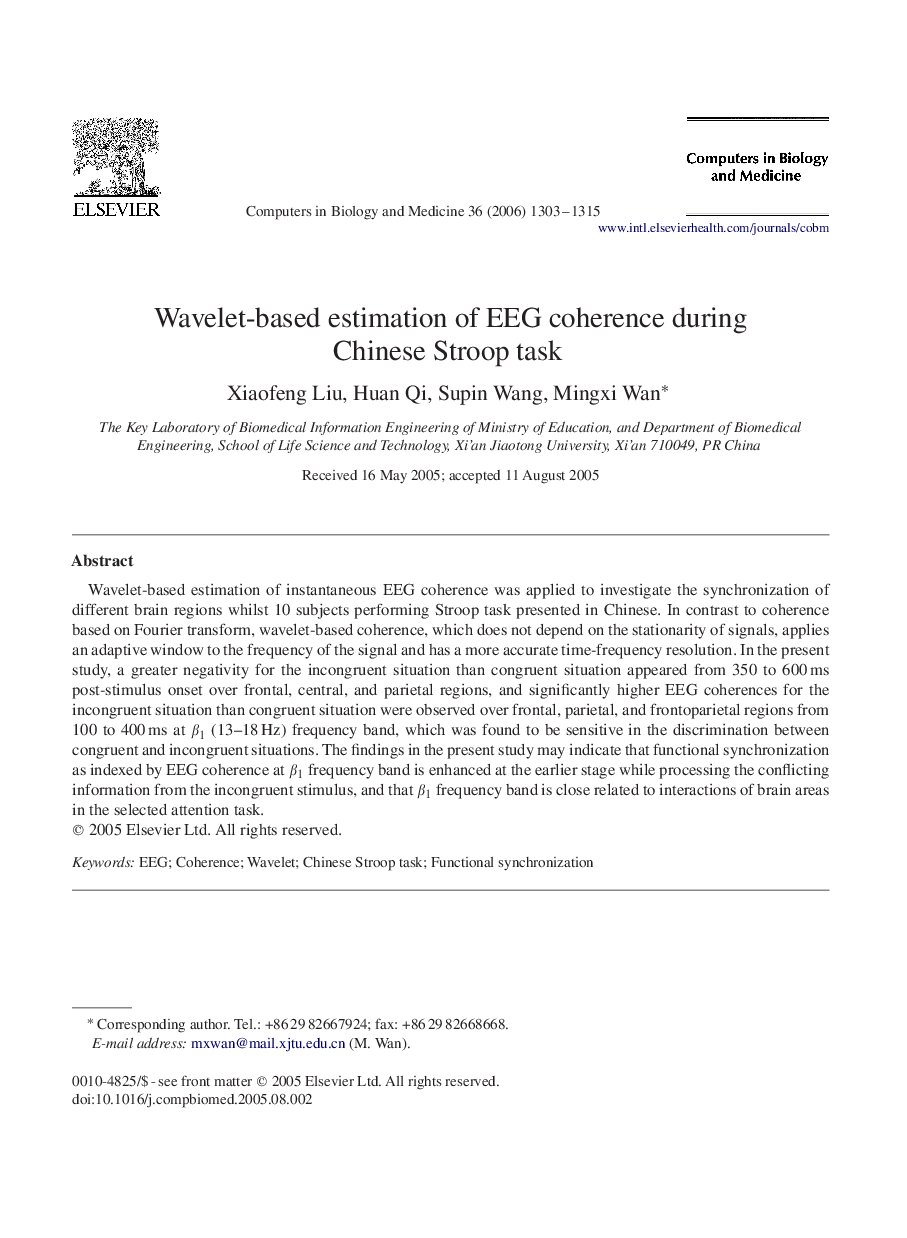| Article ID | Journal | Published Year | Pages | File Type |
|---|---|---|---|---|
| 505893 | Computers in Biology and Medicine | 2006 | 13 Pages |
Wavelet-based estimation of instantaneous EEG coherence was applied to investigate the synchronization of different brain regions whilst 10 subjects performing Stroop task presented in Chinese. In contrast to coherence based on Fourier transform, wavelet-based coherence, which does not depend on the stationarity of signals, applies an adaptive window to the frequency of the signal and has a more accurate time-frequency resolution. In the present study, a greater negativity for the incongruent situation than congruent situation appeared from 350 to 600 ms post-stimulus onset over frontal, central, and parietal regions, and significantly higher EEG coherences for the incongruent situation than congruent situation were observed over frontal, parietal, and frontoparietal regions from 100 to 400 ms at β1β1 (13–18 Hz) frequency band, which was found to be sensitive in the discrimination between congruent and incongruent situations. The findings in the present study may indicate that functional synchronization as indexed by EEG coherence at β1β1 frequency band is enhanced at the earlier stage while processing the conflicting information from the incongruent stimulus, and that β1β1 frequency band is close related to interactions of brain areas in the selected attention task.
